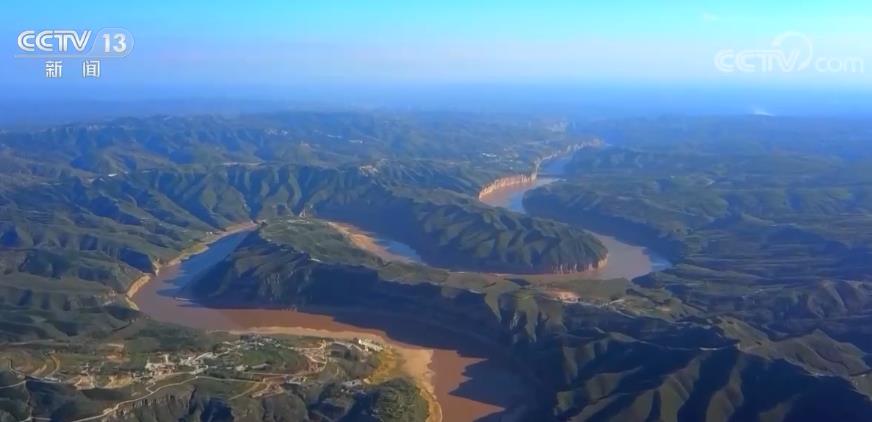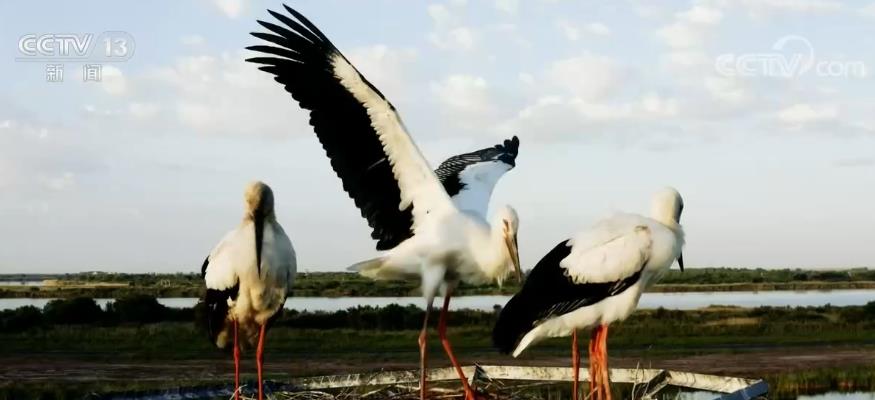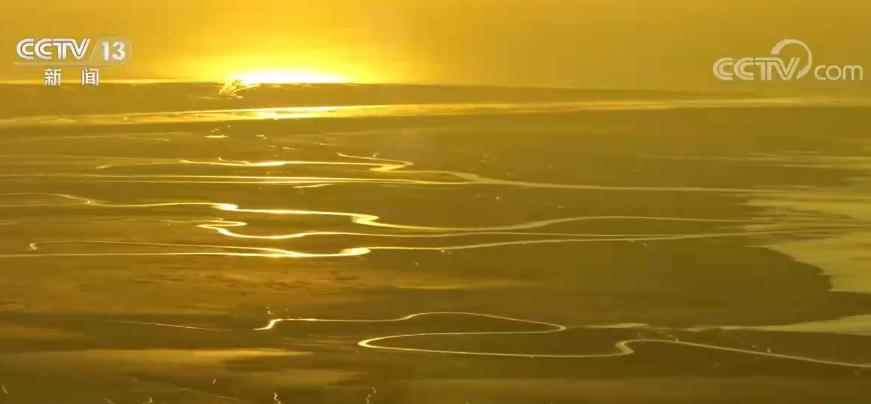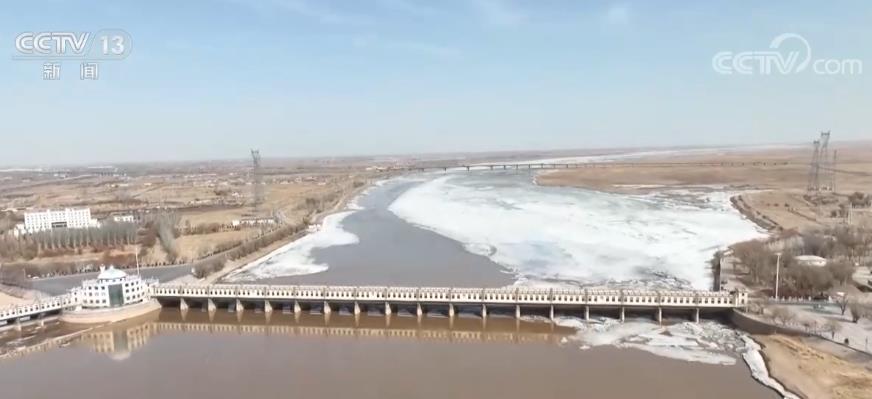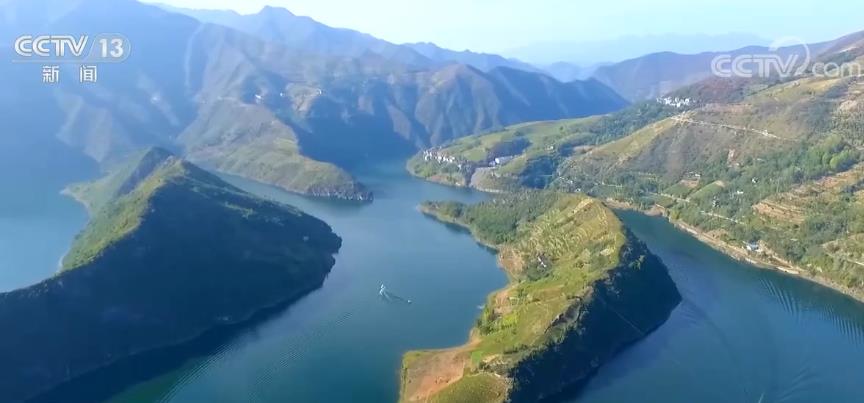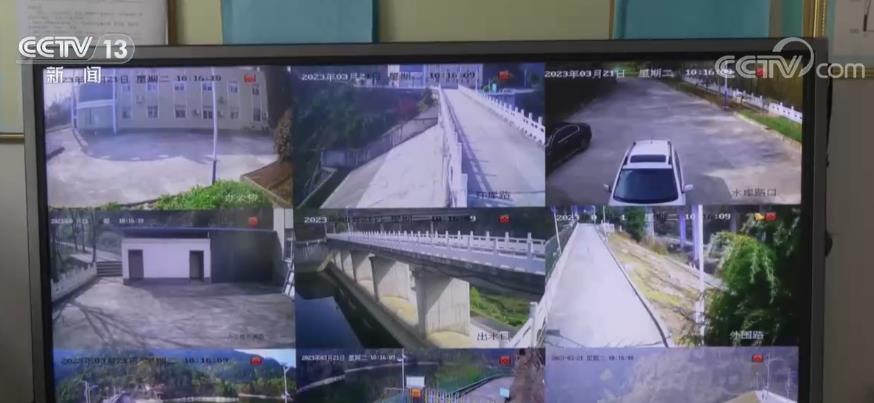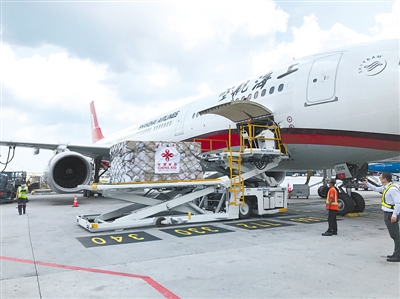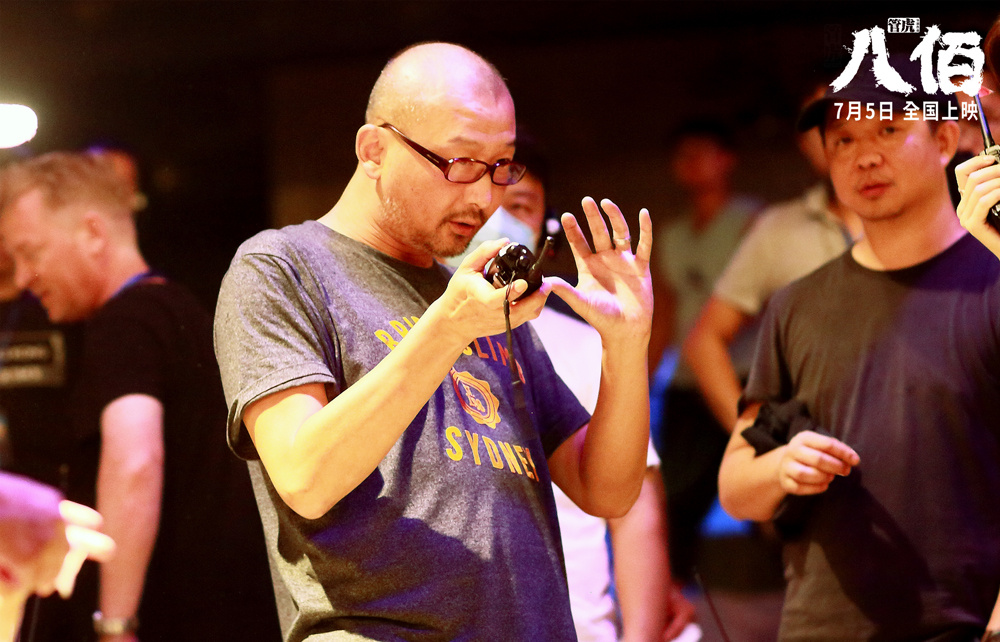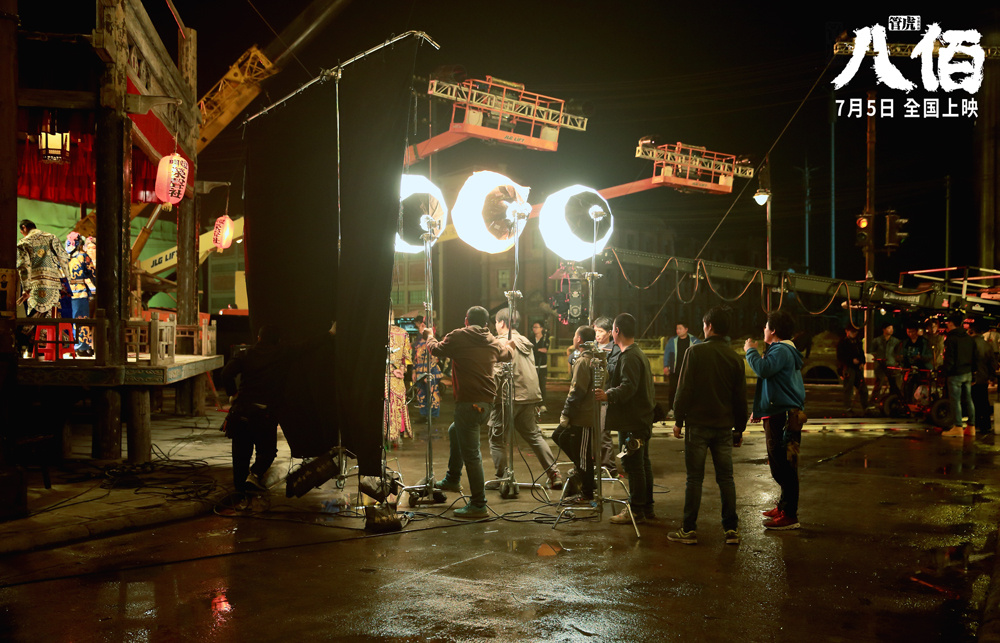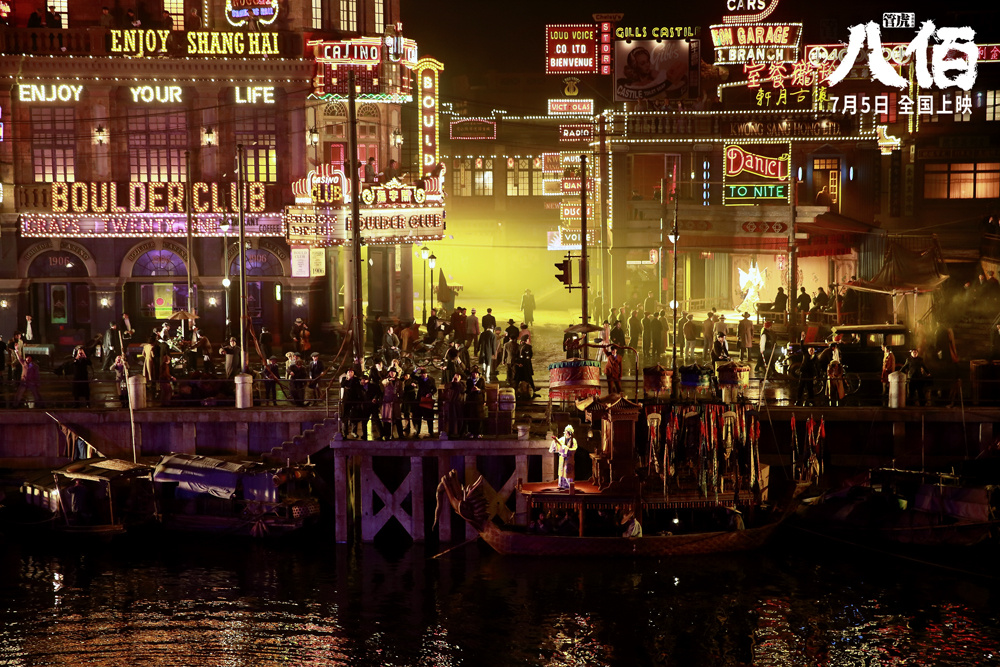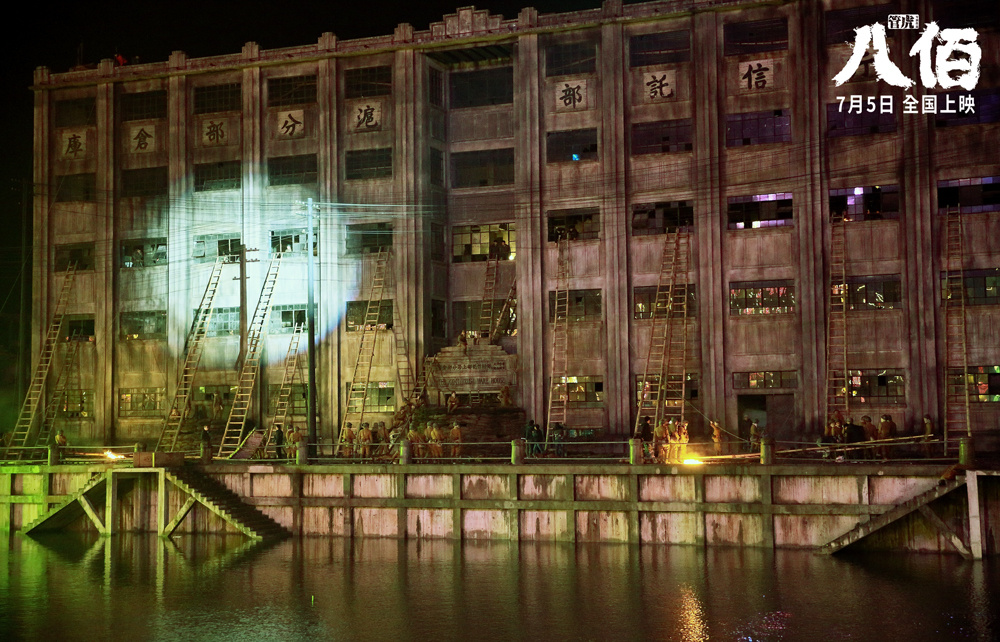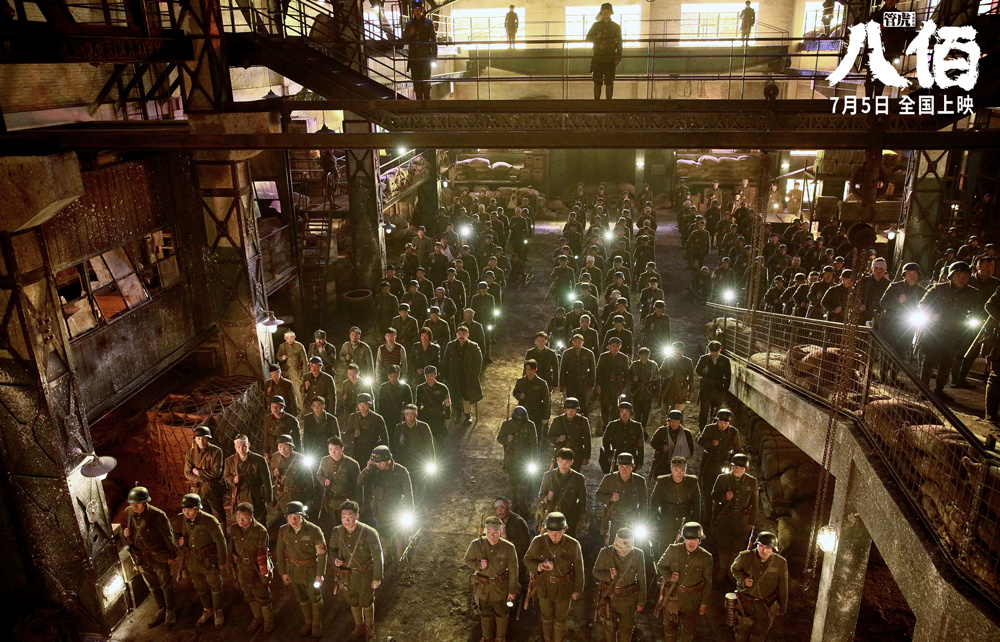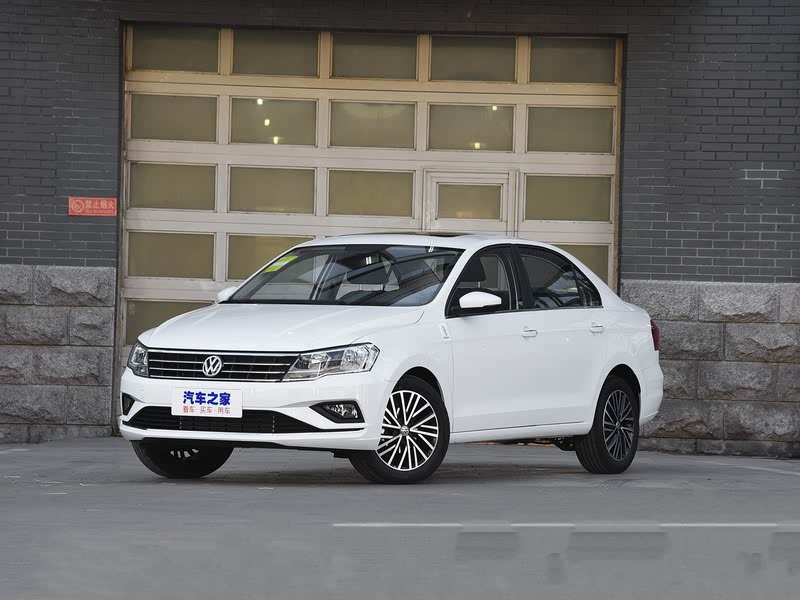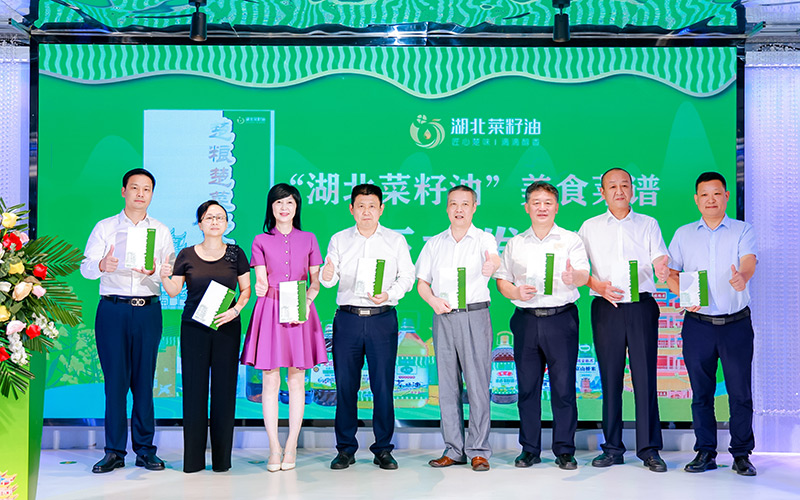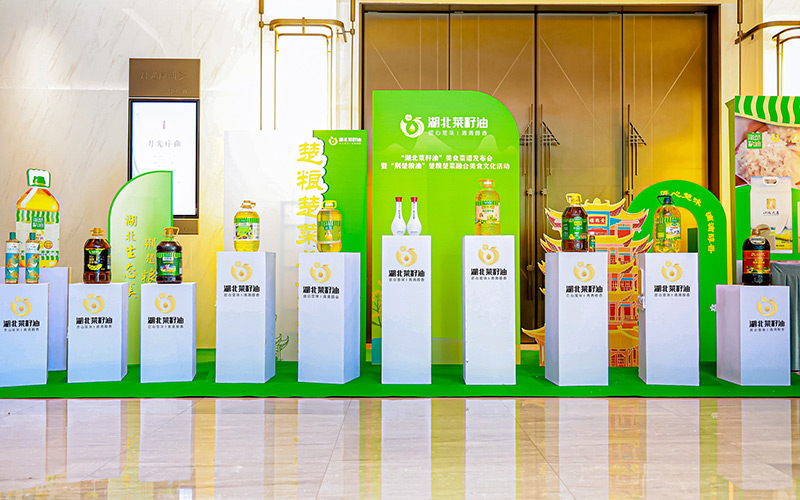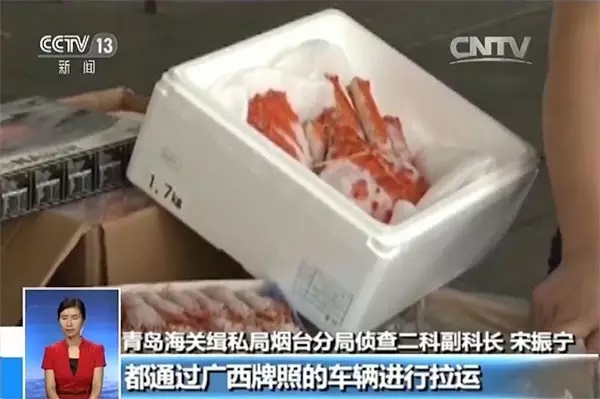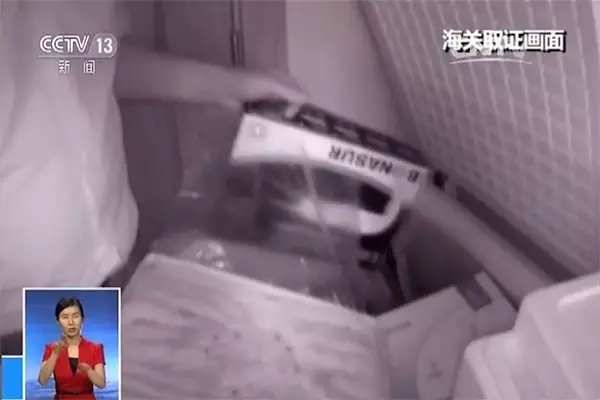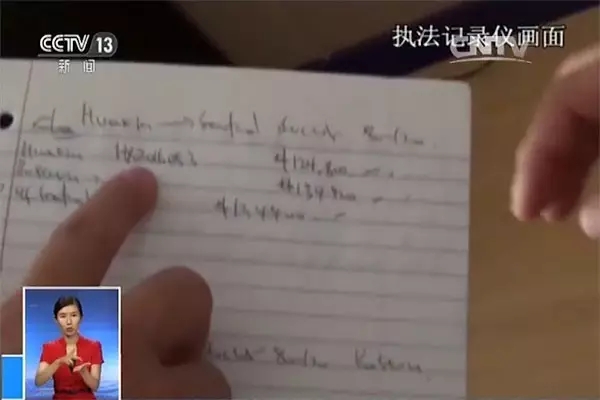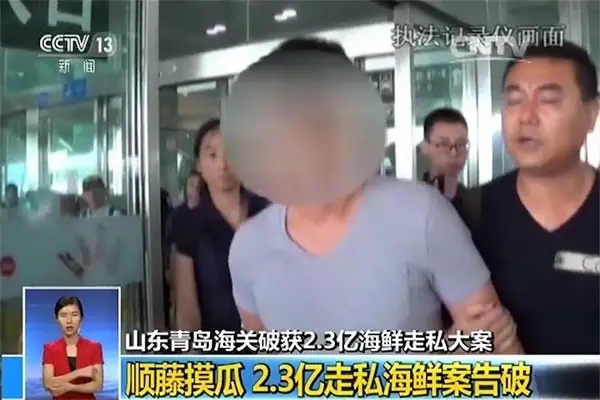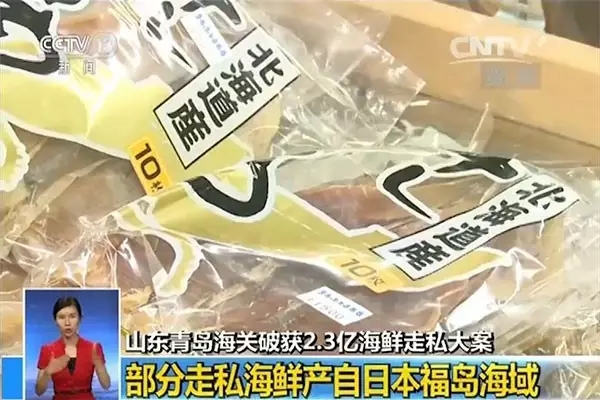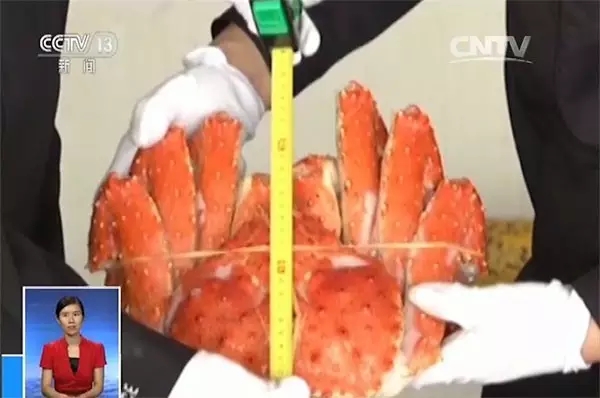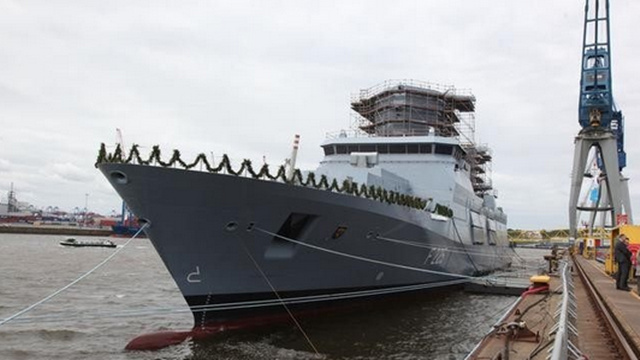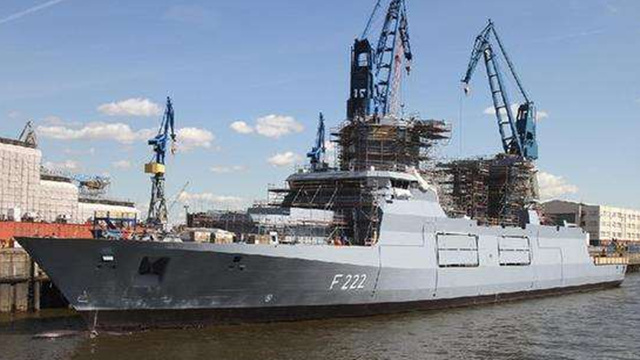Beijing, July 18 (Peng Ningling) Recently, a liposuction operation took away a 33-year-old young life, which once again pushed the safety of medical beauty and cosmetic surgery to the forefront.
Who is boosting the so-called appearance anxiety? Behind the geometric multiplication of medical and beauty disputes, when will the industry chaos stop?
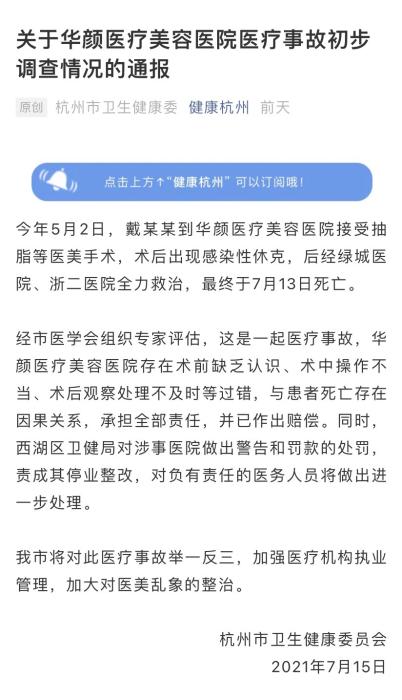
Bulletin of Hangzhou Health and Health Commission on the preliminary investigation of medical accidents in Huayan Medical Beauty Hospital
Another tragedy: 33-year-old Hangzhou woman died of liposuction infection
Because a net post posted by a friend of "Xiao Ran", "online celebrity Xiao Ran died of liposuction infection" was posted on the Internet, which caused a lot of discussion.
According to the notification of Hangzhou Health and Health Commission on the 15th, on May 2nd, Dai Moumou went to Huayan Medical Beauty Hospital for liposuction and other medical beauty operations. After the operation, he developed septic shock, and was fully treated by Greentown Hospital and Zhejiang Second Hospital. Finally, he died on July 13th.
According to the report, according to the expert evaluation organized by Hangzhou Medical Association, this is a medical accident. Huayan Medical Beauty Hospital has some faults, such as lack of understanding before operation, improper operation during operation, and untimely observation and treatment after operation. There is a causal relationship with the patient’s death, and it bears full responsibility and has made compensation.
At the same time, the Xihu District Health and Health Bureau imposed warnings and fines on the hospitals involved, instructed them to suspend business for rectification, and further dealt with the responsible medical staff.
In recent years, with the pursuit of improving people’s image, the medical beauty industry has developed rapidly.
According to enterprise survey data, there are 9400 existing "medical beauty hospitals" in China. 2020 is the peak of registration, with 2324 new ones; In the first half of this year, 2,360 new ones were added, a year-on-year increase of 177.2%.
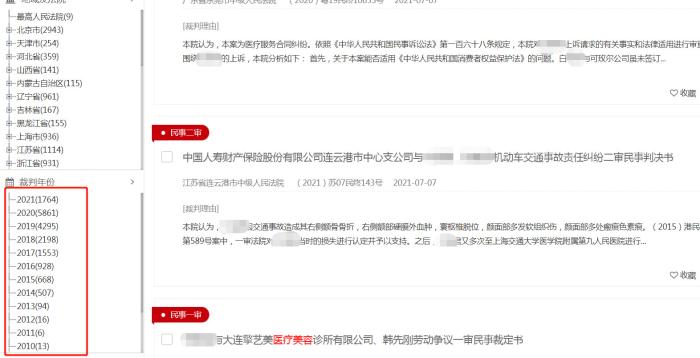
China refereeing documents online, searching for "medical beauty", showed nearly 18,000 documents. Since 2014, related disputes have increased by a large margin.
The pursuit of beauty may be accompanied by risks. Searching for the keyword "medical beauty" on the referee document network, from 2005 to now, nearly 18,000 documents have appeared, including nearly 1,300 personal injury compensation.
In terms of growth, the number of dispute documents reached 507 in 2014, and it has been growing rapidly since then. By 2020, it has reached more than 5,800.
As for liposuction, the first case on the Internet of judgment documents appeared in 2005. In addition, it is reported that in March 2003, Yao Yun, a 27-year-old white-collar worker in Harbin, underwent liposuction in a hospital and died 18 hours later. Some media also said that this was the first lawsuit in China that caused death due to liposuction.
Since then, until now, there have been more than 480 disputes about liposuction on the Internet, which is on the rise year by year.
In March of this year, a 34-year-old woman in Hainan tried to suck out thigh fat and fill her face, but unfortunately she fell on the operating table. Also in March, in a case notified by the Health Bureau of Jianggan District, Hangzhou, a woman underwent "waist and abdomen ring suction+gold micro-carving" surgery in a medical institution, and was under general anesthesia. She lost consciousness and stopped breathing 1.5 hours after operation.
"Miss the best treatment time"
After the "online celebrity Xiaoran" accident, some infectious diseases doctors thought that this should be caused by bacteremia caused by the pollution of medical devices. After bacteremia, patients often have multiple organ metastatic infections, and the symptoms are more acute, so they should be treated immediately for infected bacteria.
Xie Fang, deputy chief physician of Plastic Surgery Hospital of China Academy of Medical Sciences, told Zhongxin.com that generally speaking, the incidence of infection caused by liposuction alone is low. In addition to liposuction, Hangzhou also made autologous fat to fill the chest.
According to experts’ analysis, autologous fat sucked from the body generally needs to be separated and purified in vitro before it can be used for filling. In the process of in vitro treatment of autologous fat, the aseptic environment of operating room is very demanding, and the aseptic operation principles of all medical workers involved in the operation are also very demanding. Problems in any link may cause risks.
On 16th, Tang Liang, a doctor of medical cosmetology in the First People’s Hospital of Hangzhou affiliated to Zhejiang University School of Medicine, wrote in Weibo that "necrotizing fasciitis" was mentioned in the special investigation of this incident by Hangzhou Health and Health Commission on 14th July.
Previously, the popular science about "necrotizing fasciitis" was also hot searched.
Dr Zeng, certified by Weibo as a general surgeon in Beijing Chaoyang Hospital affiliated to Capital Medical University, said: Necrotizing fasciitis is a very dangerous disease. Deep soft tissue infection, involving muscle fascia, can spread rapidly along the fascia. The principle of treatment is early detection, early operation and early antibiotic treatment.
According to previous media reports, from the operation on the evening of May 2 to 5: 00 am on May 4, Xiao Ran kept crying with symptoms such as shortness of breath and palpitations, but these symptoms did not attract the attention of medical staff, only giving Xiao Ran oral and anal analgesics, during which Xiao Ran was once in pain and went into shock. It was Xiao Ran who called 120 for an ambulance and was sent to Hangzhou Greentown Cardiovascular Hospital.
Later, the ICU doctor called and said that Xiao Ran had missed the best treatment time because she was not sent to the hospital in time.
"If it is in a large public hospital, because the ICU is generally next to the operating room, it will deal with the problem in a relatively timely manner, and there may be different results."
In an interview with Zhongxin. com, Tang Liang said that in reality, when private institutions do handle accidents, apart from the distance, they will also weigh whether the consumers have reached the severity of being sent to ICU and whether it will affect the institutions. "If you encounter a doctor with a lack of knowledge system, the evaluation will be wrong, which will lead to irreversible results."
Tang Liang believes that liposuction is not an operation with extremely high complication rate or mortality rate, and it is relatively safe to operate reasonably within a reasonable range. In reality, some doctors think that patients are still awake, and there may be luck. In addition, it depends on how the hospitals involved stipulate that doctors sometimes can’t "have the final say".
In addition to necrotizing fasciitis, doctors also said that fat embolism is also one of the most serious complications in liposuction.
"When fat is destroyed in the process of absorption, it enters the blood and then embolizes other parts with the blood flow, such as pulmonary embolism, which will lead to death." Tang Liang said that this is a small probability event, but once it happens, it will be difficult to reverse it.
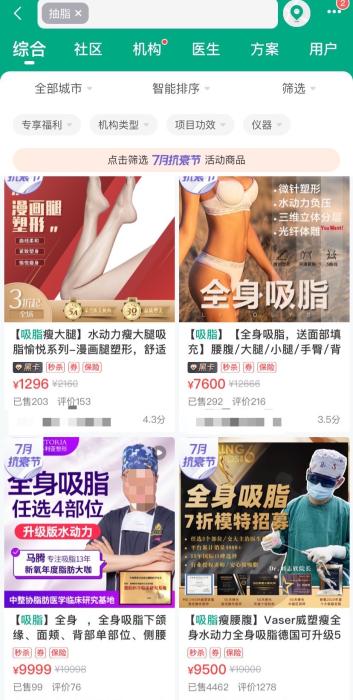
Liposuction advertisement on medical beauty app.
The more fat, the better?
When it comes to liposuction, people always seem to be directly equivalent to losing weight. Photos of slim girls are posted in front of some medical beauty institutions as publicity, and the cover publicity of many medical beauty apps also shows "cartoon legs" and "thin body", which seems to imply that people can achieve their dream figure by doing liposuction surgery.
"Liposuction is not equal to losing weight at all, but local shaping." Xie Fang introduced to Zhongxin.com that the commonly used negative pressure liposuction is to use negative pressure to suck fat out of the body. "Fat density is very low, even if you suck thousands of milliliters, you can only lose a little weight. But after liposuction, the partial body shape can really make people look slim. "
Zhongxin. com has consulted liposuction in many medical and beauty institutions in Beijing. Some consultants said that consumers with a height of 160cm and a weight of 50kg can suck 3000ml of thigh fat at a time, and some people with fatter bodies can suck 6000ml or more at a time.
According to the Catalogue of Classified Management of Medical Beauty Projects issued by the former General Office of the Ministry of Health in 2009, the cosmetic surgery projects are divided into four levels according to the difficulty and complexity of the operation and the possible medical accidents and risks.
Among them, liposuction less than 1000ml belongs to primary surgery, liposuction between 1000 ml and 2000 ml belongs to secondary surgery, and liposuction between 2000 ml and 5000 ml belongs to tertiary surgery. The operation process of tertiary surgery is complicated, with great technical difficulty and risk.
"In theory, one-time liposuction should not exceed 5000ml." Xie Fang said that sucking too much fat may lead to acid-base balance, electrolyte disorder, hypothermia and hemoglobin reduction. Therefore, liposuction must be combined with its own situation and follow the principle of moderation.
However, Tang Liang mentioned that the highest standard of 5000ml is a guiding standard, not an absolute standard. Everyone’s physical condition is different, and people who are too obese are not absolutely unsafe if they exceed 5000ml.
Tang Liang also said that in reality, many doctors will flaunt their maximum liposuction amount, and customers will fall into the thinking of "dosage measurement".
In the consultation he received, more than 50% of the consultants would ask for fat absorption, and few people simply asked for bodybuilding lines or shaping beautiful muscle contours. When informed of the scientific liposuction amount, some rational customers will listen to suggestions, but some people turn around and leave and choose doctors who can accept their own liposuction amount.
"The most important thing about liposuction is not how much you suck, but ‘ How much is left ’ 。” Tang Liang said, "How much sebum thickness is left to ensure that the skin is not necrotic? This is the most critical factor to avoid complications. "
In Tang Liang’s view, proper shaping is not wrong, but "extreme requirements" may challenge the limits of medical treatment and lead to irreversible consequences. This requirement may be caused by the aesthetic deformity of society, and at the same time, it is also pushing the institutions to compete crazily in the opposite direction. I’ll go to whoever can smoke more.
Fuzzy risk warning
It is worth mentioning that liposuction has many contraindications. However, in the interview, Zhongxin.com found that some institutions will not take the initiative to inform relevant matters, and even dilute the corresponding risks.
For example, some consumers have anemia themselves, and the consultants did not take the initiative to ask in advance. After learning, they only told the consumers that they could undergo surgery with a little adjustment.
"Anemia is absolutely impossible to do liposuction surgery." Xie Fang said that there will be a certain amount of bleeding in the process of liposuction, and there are indicators for the normal range of hemoglobin in medicine. If the normal range is not met, surgery is absolutely not allowed.
Xie Fang introduced that in the preoperative conversation, patients should be asked about their abnormal physical condition, and at the same time, various preoperative examinations should be done.
For patients with chronic diseases such as cardiovascular diseases, digestive and respiratory systems; The onset of chronic infectious diseases; Women who need to be pregnant in a short time or during pregnancy; Menstrual female population; And people with poor coagulation function; People who have been taking hormones or anticoagulants for a long time should not have liposuction. In addition, liposuction is not recommended for teenagers whose physical development is not mature.
In the process of liposuction, except for liposuction on small parts of upper arm and face, liposuction on waist and abdomen, liposuction on thigh and other large areas are generally carried out under general anesthesia or local anesthesia plus sedation. Therefore, preoperative examination should include a complete set of preoperative blood (blood routine+infection+biochemistry+coagulation+immunity), chest CT, urine routine and ECG examination.
Beyond the operational level, after the accident, appearance anxiety has also become a discussion point for everyone. Many netizens questioned: Why do you need liposuction when you are so beautiful and so thin? Stop exaggerating your appearance anxiety!
Is this facial anxiety? Weibo certified "Pink Bear" as the director of new media operation of Shanghai Pink Bear Network Technology Co., Ltd. is a big V with 1.56 million fans. In her Weibo, there are many submissions about cosmetic consultation and experience sharing every day: double eyelid cutting, liposuction, rhinoplasty … …
Five years ago, "Pink Bear" once said in Weibo: It has always been my idea to convey the direction to regular hospitals and guide the aesthetic values of nature.
After the accident, she told Zhongxin.com that there is nothing wrong with choosing cosmetic surgery to become more beautiful. There is a risk probability in medical care itself. What we should do is to guide everyone how to choose institutions and doctors correctly, and there is no need to create panic with facial anxiety.
At the same time, "Pink Bear" also mentioned the concern, "When all kinds of capital are involved and non-medical beauty fields ‘ Daren ’ Guiding the market and forming a fast-disappearing medical beauty, with the new model of "Red Man’s Medical Beauty", traffic performance is paramount, and some low-cost and inexperienced doctors are used to build and package them, which will also bury hidden dangers for the final problems. On the contrary, the market share of traditional brand institutions and doctors who are really accumulating word of mouth and strength is being squeezed. "
According to statistics, medical beauty services are within the scope of consumers’ centralized complaints in the first half of 2021 recently released by Zhejiang Consumer Protection Committee.
The data shows that in the first half of 2021, Zhejiang Consumer Protection Committee accepted a total of 363 complaints about beauty services, and the problems reflected in the complaints included false propaganda by institutions, failure to achieve the expected results, and induced loan beauty.
Previously, the investigation by Zhejiang Consumer Protection Committee found that the actual controller of the enterprise was the same person in many places in Zhejiang, and the company was frequently registered and cancelled. At the same time, such companies use short video platforms, post-it forums and other channels to publish false advertisements, exaggerate the beauty effect, share false personal experiences, and the goods and services actually provided are inconsistent with the publicity promises, which seriously damages consumers’ rights and interests.
Professional doctors have repeatedly suggested that liposuction must choose a regular big hospital, and the indications and contraindications should be fully understood before doing it.
For doctors, liposuction should not be done on a large scale or over a large area in one operation. Even if the patient needs it, it should be performed in several times or in multiple parts as appropriate.
"Just like this incident, if so many parts were not pumped, even if there were focal necrosis or infection in some parts, it would not lead to such serious results according to the modern medical level." Tang Liang said.
